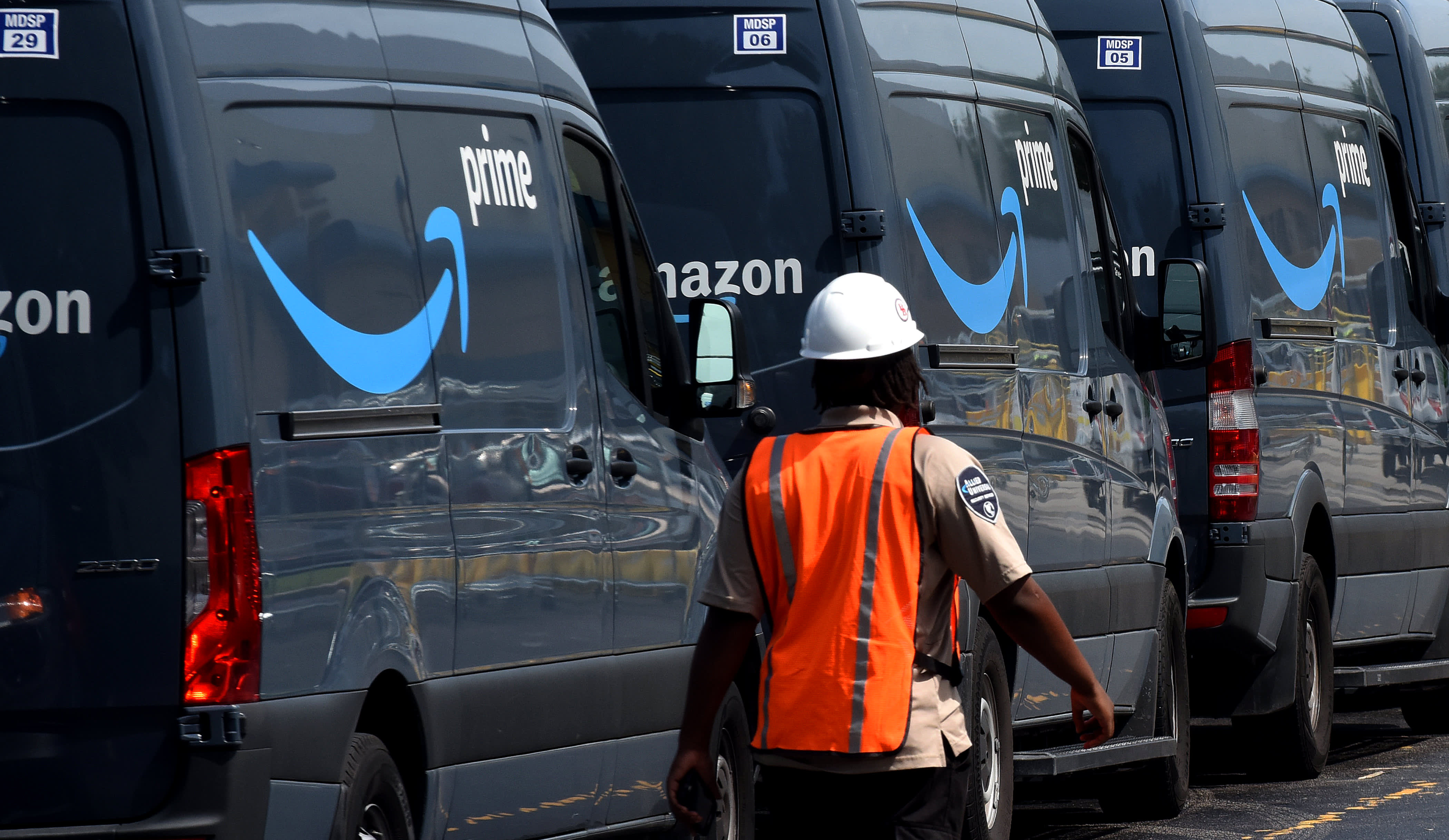Prime Day is here, and that means a lot of deliveries for Amazon’s army of 115,000 drivers who work for small businesses, called Delivery Service Partners. Amazon has been relying less and less on UPS and the U.S. Postal Service, building its own network of more than 2,000 independent contractors who then hire drivers for those dark blue Prime vans.
Since Amazon made one-day shipping the default in 2019, however, DSP drivers have voiced some big concerns. CNBC talked with current and former drivers about the pressure of getting packages to some 200 million Prime members overnight.
“People are running through stop signs, running through yellow lights. Everybody I knew was buckling their seatbelt behind their backs because the time it took just to buckle your seatbelt, unbuckle your seatbelt every time was enough time to get you behind schedule,” said Adrienne Williams, who drove for an Amazon DSP from November 2019 to July 2020.
A 2019 ProPublica report found that Amazon’s contract drivers were involved in more than 60 serious crashes since 2015, at least 10 of which were fatal. In court, Amazon has repeatedly said it’s not responsible for the actions of its contractors.
“Amazon fights tooth and nail to maintain the status quo that these are contractors. They’re not employees, because if they are employees, then you’ve got to pay the benefits. You’ve got to pick up their expenses for uniforms, trucks, what have you. And then Amazon’s cost structure changes. And if Amazon’s cost structure changes, so will yours,” said Mark Solomon, who tracks Amazon for logistics analyst FreightWaves.
In an effort to improve safety, Amazon added AI-enabled cameras in some vans earlier this year, with four lenses to watch the road, both sides of the vehicle, and the driver. An Amazon instructional video says it’s recording “100% of the time.”
“I just don’t feel like I should be watched eight to 10 hours out of the day,” said Shaleen Williams, a DSP driver in Lansing, Michigan. She talked with CNBC after a 10-hour shift last month, saying that her busiest day so far had 199 stops and 320 packages.
Drivers told us that poor routing practices have led them into dangerous situations and left them no time to find a bathroom.
“Now that’s why some people are urinating in cups and everything and plastic bottles,” Williams said. “They just kind of leave them which is definitely disgusting, getting into the vans the next day and seeing somebody’s pee bottle sitting behind the seat or sitting in the cup holder.”
Watch the video to hear from more drivers about the realities of the job, how the model works, and why Amazon outsources delivery to DSPs.
